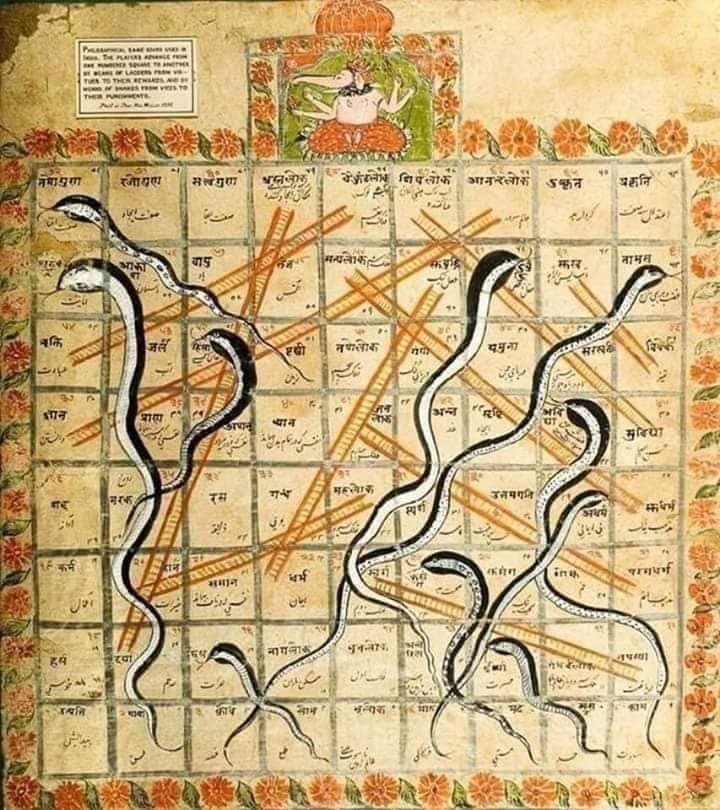The 13th Century CE, Indian poet and saint Gyandev created a children’s game called Moksha Patam. The British later named it as Snakes and Ladders instead of retaining the original Moksha Patam. Originally, the game was used as a part of moral instruction to children. The squares in which ladders start were each supposed to stand for a virtue, and those housing the head of a snake were supposed to stand for an evil. The snakes outnumbered the ladders in the original Hindu game.

The game was transported to England by the colonial rulers in the latter part of the 19th Century CE, with some modifications. In the original one, a ‘hundred squares game board’, the 12th square was faith, the 51st square was reliability, the 57th square was generosity, the 76th square was knowledge, and the 78th square was asceticism. These were the squares where the ladders were found and one could move ahead faster. The 41st square was for disobedience, the 44th square for arrogance, the 49th square for vulgarity, the 52nd square for theft, the 58th square for lying, the 62nd square for drunkenness, the 69th square for debt, the 84th square for anger, the 92nd square for greed, the 95th square for pride, the 73rd square for murder and the 99th square for lust.
These were the squares where the snake waited with their mouth open. The 100th square represented Nirvana or Moksha.The tops of each ladder depicted a God, or one of the various heavens (Kailash, Vaikunth , Brahmalok) and so on. As the game progressed various actions were supposed to take you up and down the board as in life..The game had been interpreted and used as a tool for teaching the effects of good deeds versus bad ones. The game was popular in ancient India.
It was also associated with traditional Sanatan philosophy contrasting karma and kama, or destiny and desire. It emphasized destiny, as opposed to games such as pachisi, which focused on life as a mixture of skill and luck. The underlying ideals of the game inspired a version introduced in Victorian England in 1892. The modified game was named Snakes and Ladders and stripped of its moral and religious aspects and the number of ladders and snakes were equalized. In 1943, the game was introduced in the US under the name Chutes and Ladders.



